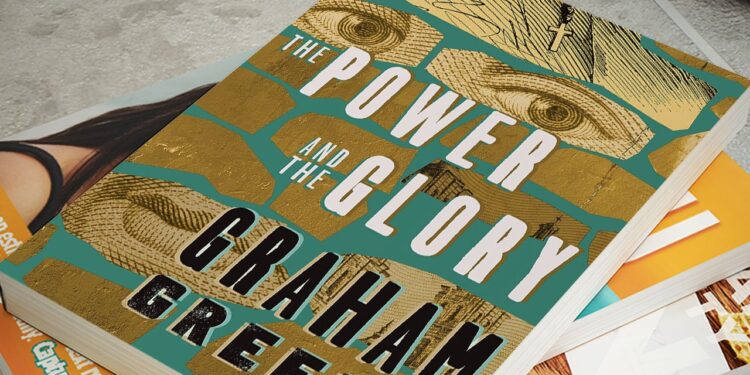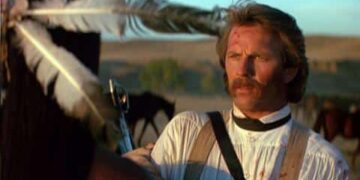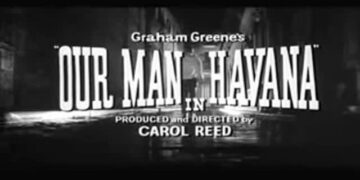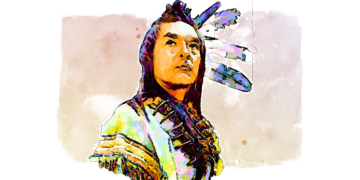Graham Greene, the renowned British writer, has left an indelible mark on both the literary and cinematic worlds. His captivating novels and screenplays have enthralled audiences for decades, with their richly drawn characters, atmospheric settings, and thought-provoking themes. However, to truly understand the man behind these masterpieces, one must delve into his fascinating life and explore his deep affinity for cinema and media.
Graham Greene’s early life and love for cinema and media
Born on October 2, 1904, in Berkhamsted, Hertfordshire, Graham Greene was exposed to the world of storytelling from a young age. His father, Charles Greene, was the headmaster of Berkhamsted School, where Graham spent his formative years. It was during this time that Greene developed a deep love for literature, cinema, and media. He would often spend his evenings engrossed in classic novels and eagerly anticipate the release of the latest films.
Exploring Graham Greene’s affinity for cinema through his writings
As Graham Greene embarked on his writing career, his passion for cinema and media became evident in his works. He expertly weaved cinematic elements into his prose, creating vivid scenes that transported readers to different worlds. Greene’s descriptive language and attention to detail mirrored the visual storytelling techniques used in film, captivating readers and immersing them in his narratives. His unique writing style, influenced by his love for cinema, set him apart from his contemporaries and established him as a literary force to be reckoned with.
The impact of cinema and media on Graham Greene’s works
Cinema and media played a significant role in shaping Graham Greene’s works, not only in terms of style but also thematically. Many of his novels and screenplays explored the moral and ethical dilemmas faced by individuals in a rapidly changing world, echoing the societal anxieties prevalent during the early to mid-20th century. Greene often used the medium of film as a means to examine these complexities, presenting characters who grappled with their inner demons and external pressures. His astute observations on the human condition, influenced by his deep understanding of cinema and media, resonated with readers and viewers alike, making his works timeless and enduring.
Graham Greene’s love life and friendships
Beyond his literary and cinematic achievements, Graham Greene’s personal life was equally intriguing. His love life and friendships added another layer of complexity to his already multifaceted persona. Greene had several romantic relationships throughout his life, most notably with Catherine Walston, whom he affectionately referred to as his “C.” Their passionate and tumultuous affair inspired Greene’s novel, “The End of the Affair,” which delved into themes of love, jealousy, and faith. Additionally, Greene formed lasting friendships with fellow writers and artists, such as Evelyn Waugh and Anthony Burgess, who shared his passion for cinema and media. These relationships not only enriched Greene’s personal life but also influenced his creative process, leading to the creation of some of his most memorable characters and narratives.
The rich and poor themes in Graham Greene’s writings
One recurring theme in Graham Greene’s writings is the exploration of the divide between the rich and the poor. Drawing from his own experiences as a British writer traveling to impoverished countries, Greene shed light on the stark inequalities that exist in society. His novels often depicted characters from different social classes, highlighting the struggles and injustices faced by those living in poverty. With compassion and empathy, Greene challenged societal norms and questioned the moral responsibilities of the privileged. Through his powerful storytelling, he aimed to inspire readers to confront these disparities and strive for a more equitable world.
Unveiling the hidden gems and trivia about Graham Greene
Behind the pages of Graham Greene’s novels and screenplays lie hidden gems and intriguing trivia that shed light on his life and creative process. For instance, did you know that Greene wrote the screenplay for the iconic film “The Third Man,” starring Orson Welles? This collaboration between two creative powerhouses resulted in a cinematic masterpiece that continues to captivate audiences to this day. Additionally, Greene’s novel “Brighton Rock” was inspired by his time working as a journalist in the seaside town of Brighton, where he encountered the seedy underbelly of criminal activity. These fascinating tidbits offer a deeper understanding of the man behind the words and add another layer of appreciation to his body of work.
Graham Greene’s best quotes that reflect his views on cinema and media
Throughout his career, Graham Greene uttered profound and thought-provoking words that reflected his views on cinema and media. One of his most famous quotes states, “Film is a battleground for dreams.” This encapsulates Greene’s belief in the transformative power of cinema, where dreams can be realized, shattered, and examined. Another notable quote from Greene is, “Cinema is a matter of what’s in the frame and what’s out.” This succinctly captures his understanding of the visual medium and the importance of framing and composition in conveying meaning. These quotes offer a glimpse into Greene’s deep appreciation for cinema and media and provide valuable insights into his creative philosophy.
The main places where Graham Greene’s books are set
Graham Greene’s novels are known for their evocative settings, which serve as integral backdrops to his narratives. From the humid streets of Saigon in “The Quiet American” to the dusty landscapes of Sierra Leone in “The Heart of the Matter,” Greene’s books take readers on a journey to diverse locales around the world. Each setting is meticulously crafted, transporting readers to a specific time and place. Whether it be the seedy underworld of Brighton in “Brighton Rock” or the war-torn streets of Vienna in “The Third Man,” Greene’s vivid descriptions breathe life into these locations, making them as much a character in the story as the individuals who inhabit them.
A chronological journey through Graham Greene’s books, from the first to the last
To truly appreciate Graham Greene’s literary contributions, it is essential to embark on a chronological journey through his books. Starting with his debut novel, “The Man Within,” readers are introduced to Greene’s early explorations of themes such as guilt, morality, and redemption. As his writing career progressed, he delved deeper into these themes, culminating in masterpieces such as “The Power and the Glory” and “The Heart of the Matter.” Each book offers a unique perspective on the human condition, showcasing Greene’s ability to navigate the complexities of the human psyche with precision and nuance. Exploring his works in chronological order allows readers to witness the evolution of Greene’s writing style and thematic concerns, making for a truly enriching literary experience.
The screen adaptation of “Our Man in Havana” and its significance
One of Graham Greene’s most beloved novels, “Our Man in Havana,” was adapted for the screen in 1959, marking a significant milestone in his career. The film, directed by Carol Reed and starring Alec Guinness, perfectly captured the satirical tone and dark humor of the novel. Greene himself wrote the screenplay, ensuring that his vision was faithfully translated onto the screen. The film’s success solidified Greene’s reputation as a writer capable of seamlessly transitioning between mediums and further cemented his status as a literary and cinematic luminary.
Other artists who inspired Graham Greene’s works
While Graham Greene’s talent and creativity were unparalleled, he was not immune to the influence of other artists. Throughout his life, he drew inspiration from various sources, including fellow writers and filmmakers. For instance, Greene greatly admired the works of Joseph Conrad and Henry James, whose nuanced characterizations and exploration of moral dilemmas resonated with him. Additionally, he found inspiration in the films of directors such as Alfred Hitchcock and John Ford, who expertly crafted suspenseful narratives and explored the complexities of the human psyche. These artistic influences can be seen in Greene’s works, adding depth and complexity to his storytelling.
Other writers and books to explore if you enjoyed Graham Greene’s writings
If you found yourself captivated by Graham Greene’s writings, there are several other authors and books you should explore. One such writer is John le Carré, whose espionage thrillers delve into the moral ambiguities of the Cold War era. Le Carré’s intricate plotting and well-drawn characters are reminiscent of Greene’s works, making him a perfect choice for fans of the British literary giant. Additionally, “The Quiet American” by Viet Thanh Nguyen offers a fresh perspective on the themes of war and colonialism, echoing Greene’s exploration of these subjects. Other authors to consider include Somerset Maugham, F. Scott Fitzgerald, and George Orwell, all of whom share Greene’s ability to craft compelling narratives that delve into the human condition.
Conclusion: Graham Greene’s enduring legacy in the world of literature and cinema
In conclusion, Graham Greene’s life and works continue to captivate audiences with their unique blend of literary brilliance and cinematic sensibilities. His deep affinity for cinema and media permeates his writings, elevating them to a level of artistry rarely seen. Through his exploration of complex themes, richly drawn characters, and evocative settings, Greene leaves a lasting impact on readers and viewers alike. His enduring legacy as a master storyteller ensures that his works will continue to be cherished and celebrated for generations to come.











